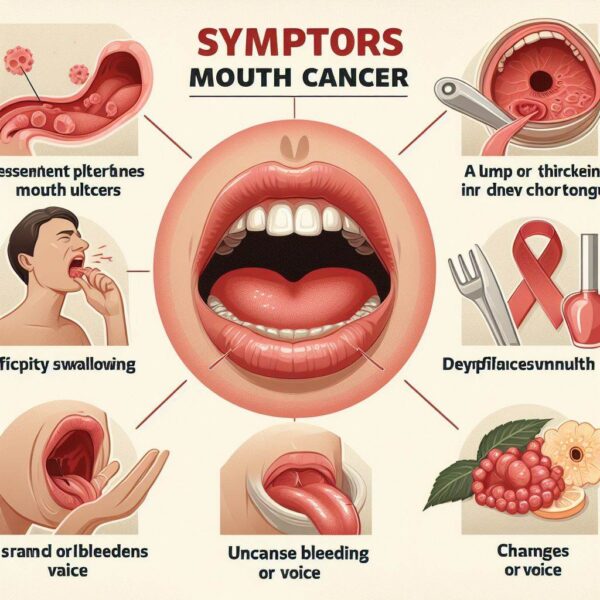
Maintaining oral health is crucial for overall well-being, yet oral cancer remains a significant health concern worldwide. Oral cancer can affect various parts of the mouth, including the lips, tongue, gums, and throat, and early detection is key to successful treatment.
Recognizing the symptoms of oral mouth cancer is vital for prompt diagnosis and intervention. In this article, we explore the diverse manifestations of oral cancer, ranging from subtle changes in oral tissues to more noticeable symptoms.
By understanding these signs and symptoms, individuals can be proactive in seeking medical attention if they notice any concerning changes in their oral health, potentially improving their chances of successful treatment and recovery.
Symptoms Of Oral Mouth Cancer

1. Persistent Mouth Sores:
Ulcers or sores that do not heal within two weeks can be a sign of oral cancer. These sores may bleed easily and cause discomfort or pain.
2. Red or White Patches:
Red or white patches on the tongue, gums, or lining of the mouth (known as leukoplakia or erythroplakia) may indicate abnormal cell growth and should be evaluated by a healthcare professional.
3. Difficulty Swallowing:
Difficulty or pain when swallowing (dysphagia) can occur as a result of tumors in the throat or esophagus, a common symptom of advanced oral cancer.
4. Changes in Speech:
Changes in speech, such as slurred speech or difficulty articulating words, may occur if oral cancer affects the tongue or other parts of the mouth involved in speech production.
5. Swelling or Lumps:
Swelling, lumps, or thickening in the mouth, throat, or neck can be indicative of tumors or enlarged lymph nodes, which may be a sign of oral cancer.
6. Persistent Sore Throat:
A persistent sore throat that does not improve with treatment, along with other symptoms, may warrant further investigation for oral cancer.
7. Loose Teeth:
Loose teeth or difficulty wearing dentures may occur if oral cancer affects the supporting tissues of the teeth or jawbone.
8. Ear Pain:
Pain in the ears that is not related to other ear conditions, such as infection, can sometimes be a symptom of oral cancer, particularly if it occurs on one side only.
9. Numbness or Tingling:
Numbness, tingling, or loss of sensation in the mouth, lips, or face may occur if oral cancer affects nerves in the area.
10. Unexplained Weight Loss:
Unexplained weight loss, particularly if accompanied by other symptoms of oral cancer, may indicate advanced disease and should be evaluated by a healthcare professional.
What Is Oral Mouth Cancer
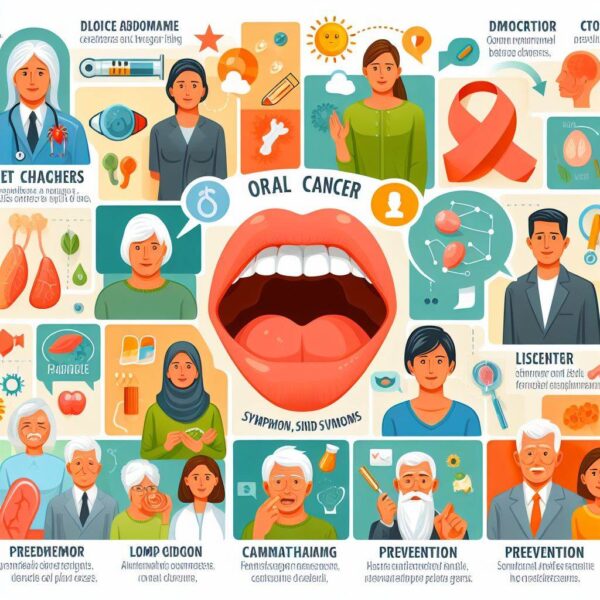
Oral mouth cancer, also known as oral cavity cancer or oral cancer, is a serious and potentially life-threatening condition characterized by the abnormal growth of cells in the mouth. This type of cancer can affect various areas within the oral cavity, including the lips, tongue, gums, inner lining of the cheeks, roof of the mouth (palate), and floor of the mouth.
Oral cancer is one of the most common types of cancer globally, with a significant impact on both physical health and quality of life. Understanding the nature of oral mouth cancer, its risk factors, and potential symptoms is crucial for early detection and effective treatment.
In this article, we delve into the complexities of oral mouth cancer, exploring its definition, causes, and key aspects of diagnosis and management. By shedding light on this prevalent health issue, we aim to raise awareness and empower individuals to take proactive steps towards oral health and cancer prevention.
Exploring Oral Mouth Cancer:
1. Definition:
Oral mouth cancer refers to the abnormal growth of malignant cells in the oral cavity, including the lips, tongue, gums, inner lining of the cheeks, palate, and floor of the mouth.
2. Types of Oral Cancer:
Oral mouth cancer can manifest in various forms, including squamous cell carcinoma, which accounts for the majority of cases, as well as less common types such as adenocarcinoma, melanoma, and verrucous carcinoma.
3. Causes and Risk Factors:
The development of oral cancer is often associated with certain risk factors, including tobacco use (smoking or chewing), excessive alcohol consumption, chronic sun exposure (for lip cancer), human papillomavirus (HPV) infection, poor oral hygiene, and a diet low in fruits and vegetables.
4. Symptoms:
Symptoms of oral mouth cancer may include persistent mouth sores, red or white patches in the mouth, difficulty swallowing or speaking, swelling or lumps in the mouth or neck, unexplained weight loss, ear pain, and numbness or tingling in the mouth or face.
5. Diagnosis:
Diagnosis of oral cancer typically involves a thorough examination of the oral cavity by a healthcare professional, followed by a biopsy and histopathological analysis of any suspicious lesions.
6. Treatment:
Treatment for oral mouth cancer depends on various factors, including the stage and location of the cancer, as well as the individual’s overall health and preferences. Treatment options may include surgery, radiation therapy, chemotherapy, targeted therapy, and immunotherapy.
7. Prognosis:
The prognosis for oral cancer varies depending on the stage at diagnosis, the extent of spread, and other factors. Early detection and prompt treatment significantly improve prognosis and survival rates.
8. Prevention:
Preventive measures for oral mouth cancer include avoiding tobacco use, limiting alcohol consumption, practicing good oral hygiene, protecting lips from sun exposure, receiving the HPV vaccine, and maintaining a healthy diet rich in fruits and vegetables.
9. Screening and Awareness:
Regular dental check-ups and self-examination of the oral cavity are essential for early detection of oral cancer. Raising awareness about the signs and symptoms of oral cancer can also help promote early diagnosis and timely intervention.
10. Support and Resources:
Individuals diagnosed with oral mouth cancer may benefit from support groups, counseling services, and access to resources that provide information, guidance, and emotional support throughout their cancer journey. I hope after reading this far you are able to understand the Symptoms Of Oral Mouth Cancer.
How Are The Reasons For Oral Mouth Cancer
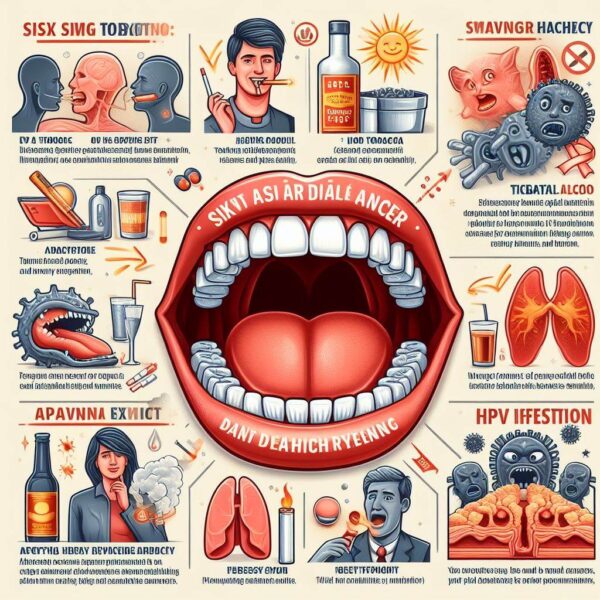
Oral mouth cancer, a prevalent and potentially life-threatening condition, arises from a complex interplay of various factors that contribute to the abnormal growth of cells in the oral cavity. Understanding the underlying reasons for oral mouth cancer is crucial for effective prevention, early detection, and management of this disease.
From lifestyle choices to genetic predispositions and environmental exposures, numerous factors can increase an individual’s risk of developing oral cancer. In this article, we delve into the diverse reasons behind the onset of oral mouth cancer, shedding light on the multifaceted nature of this disease.
By exploring these reasons in-depth, we aim to enhance awareness and empower individuals to make informed decisions regarding their oral health and cancer prevention strategies.
The Reasons For Oral Mouth Cancer:
1. Tobacco Use:
Smoking tobacco and chewing tobacco are significant risk factors for oral mouth cancer, as they expose the oral cavity to carcinogenic substances that can damage the cells lining the mouth and throat.
2. Excessive Alcohol Consumption:
Chronic alcohol consumption can increase the risk of oral cancer by promoting cellular damage and impairing the body’s ability to repair DNA damage.
3. Human Papillomavirus (HPV) Infection:
Certain strains of HPV, particularly HPV-16 and HPV-18, have been linked to an increased risk of oral cancer, especially in the oropharynx (back of the throat).
4. Poor Oral Hygiene:
Neglecting oral hygiene practices such as regular brushing, flossing, and dental check-ups can lead to the accumulation of bacteria and plaque in the mouth, increasing the risk of oral cancer.
5. Chronic Sun Exposure:
Prolonged exposure to ultraviolet (UV) radiation from the sun can increase the risk of lip cancer, particularly squamous cell carcinoma of the lip.
6. Dietary Factors:
A diet low in fruits and vegetables and high in processed foods, red meat, and saturated fats may contribute to an increased risk of oral cancer.
7. Genetic Predisposition:
Genetic factors can influence an individual’s susceptibility to oral cancer, with certain genetic mutations increasing the likelihood of developing the disease.
8. Age and Gender:
The risk of oral cancer increases with age, with the majority of cases diagnosed in individuals over the age of 45. Men are also at higher risk than women for developing oral cancer.
9. Oral Health Conditions:
Chronic oral health conditions such as gum disease (periodontitis) and oral lichen planus have been associated with an increased risk of oral cancer.
10. Environmental Exposures:
Exposure to environmental carcinogens such as asbestos, nickel, and formaldehyde in occupational settings may increase the risk of oral cancer.
How People Realize They Have Oral Mouth Cancer

Oral mouth cancer, a serious and potentially life-threatening condition, often presents subtle symptoms in its early stages, making it challenging to detect. However, recognizing the signs and symptoms of oral cancer is crucial for timely diagnosis and intervention.
Understanding how people realize they have oral mouth cancer involves awareness of the various manifestations of the disease, ranging from visible changes in oral tissues to more noticeable symptoms such as difficulty swallowing or speaking.
Let’s explore the diverse ways in which individuals may become aware of the presence of oral mouth cancer, highlighting the importance of vigilance and regular oral health screenings.
By shedding light on these indicators, we aim to empower individuals to take proactive steps towards early detection and treatment, potentially improving their prognosis and quality of life.
Presence Of Oral Mouth Cancer:
• Visible Signs:
People may notice visible changes in the oral tissues, such as red or white patches, ulcers, or lumps, that do not heal within a few weeks.
• Pain or Discomfort:
Persistent pain or discomfort in the mouth, tongue, throat, or jaw that does not improve with over-the-counter remedies or resolves temporarily but recurs.
• Difficulty Swallowing:
Difficulty or pain when swallowing (dysphagia), which may be accompanied by a sensation of something stuck in the throat or persistent hoarseness.
• Changes in Speech:
Changes in speech patterns, such as slurred speech, difficulty articulating words, or changes in voice quality, which may indicate the presence of oral cancer affecting the tongue or vocal cords.
• Swelling or Lumps:
Swelling, lumps, or thickening in the mouth, throat, or neck that may be visible or palpable and persist despite conservative measures such as warm saltwater rinses.
• Unexplained Weight Loss:
Unexplained weight loss, particularly if accompanied by other symptoms such as loss of appetite, fatigue, or general weakness, may indicate advanced oral cancer.
• Ear Pain:
Pain in the ears that is not attributed to other ear conditions, such as infection or wax buildup, and occurs unilaterally (on one side only) or in association with other oral symptoms.
• Numbness or Tingling:
Numbness, tingling, or loss of sensation in the mouth, lips, tongue, or face, which may occur if oral cancer affects nerves in the area.
• Persistent Sore Throat:
A persistent sore throat or persistent cough that does not respond to conventional treatments and is not attributed to other respiratory conditions.
• Changes in Taste or Smell:
Changes in taste perception or sense of smell, such as a metallic taste in the mouth or an altered perception of flavors, which may be indicative of underlying oral health issues, including oral cancer.
How Can A Normal Person Avoid Having Oral Mouth Cancer
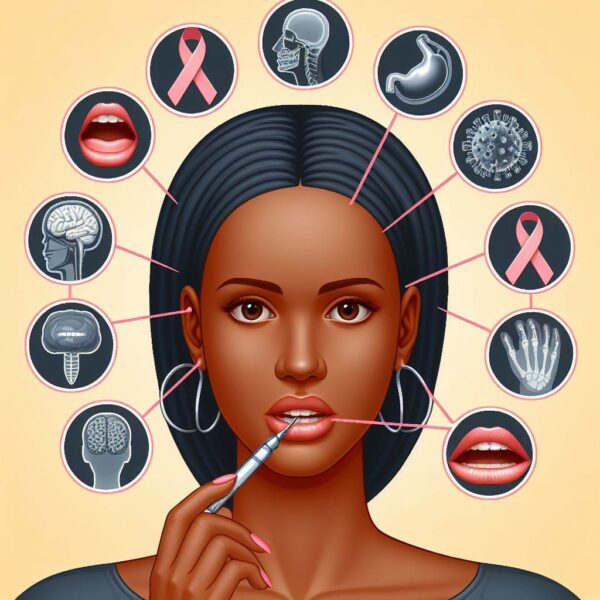
Preventing oral mouth cancer is a vital aspect of maintaining overall health and well-being. While certain risk factors for oral cancer, such as genetics and age, are beyond our control, there are proactive steps that individuals can take to reduce their risk of developing this potentially life-threatening condition.
From adopting healthy lifestyle habits to practicing good oral hygiene and seeking regular medical check-ups, there are various strategies that can help mitigate the risk of oral cancer. In this article, we explore how a normal person can avoid having oral mouth cancer, emphasizing the importance of awareness, prevention, and early detection.
By implementing these preventive measures, individuals can take charge of their oral health and reduce their susceptibility to oral cancer, ultimately promoting a healthier and happier lifestyle.
Avoid Having Oral Mouth Cancer:
1. Avoid Tobacco Use:
Tobacco use, including smoking and chewing tobacco, is one of the most significant risk factors for oral mouth cancer. Avoiding tobacco products altogether can greatly reduce the risk of developing oral cancer.
2. Limit Alcohol Consumption:
Excessive alcohol consumption is another major risk factor for oral cancer. Limiting alcohol intake to moderate levels or abstaining altogether can help lower the risk of developing this disease.
3. Maintain a Healthy Diet:
Consuming a balanced diet rich in fruits, vegetables, whole grains, and lean proteins provides essential nutrients and antioxidants that support overall health and reduce the risk of oral cancer.
4. Practice Good Oral Hygiene:
Maintaining good oral hygiene habits, including brushing teeth twice a day, flossing daily, and visiting the dentist regularly for check-ups and cleanings, helps prevent oral health issues and reduces the risk of oral cancer.
5. Protect Lips from Sun Exposure:
Prolonged sun exposure can increase the risk of lip cancer. Wearing lip balm with sunscreen, avoiding excessive sun exposure, and wearing hats or other protective clothing can help protect the lips from harmful UV radiation.
6. Receive the HPV Vaccine:
Human papillomavirus (HPV) infection is a risk factor for oral cancer, particularly in the oropharynx. Getting vaccinated against HPV can help prevent infection and reduce the risk of HPV-related oral cancers.
7. Regular Self-Examination:
Performing regular self-examinations of the oral cavity can help detect any changes or abnormalities early on. Look for signs such as red or white patches, ulcers, lumps, or swelling, and seek medical attention if any concerning symptoms are noted.
8. Seek Prompt Medical Attention:
If any symptoms of oral cancer are observed, such as persistent mouth sores, difficulty swallowing, or unexplained weight loss, it’s essential to seek prompt medical attention for further evaluation and diagnosis.
9. Reduce Exposure to Environmental Carcinogens:
Minimizing exposure to environmental carcinogens such as asbestos, formaldehyde, and nickel, particularly in occupational settings, can help reduce the risk of oral cancer.
10. Stay Informed and Educated:
Educating oneself about the risk factors, symptoms, and preventive measures for oral cancer is essential for making informed decisions about oral health and cancer prevention strategies.
What Oral Conditions May Be Precancerous?
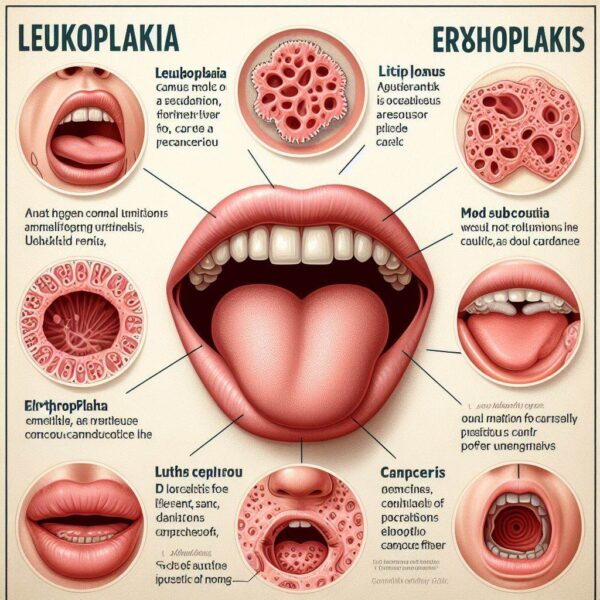
Oral health is fundamental to overall well-being, and certain oral conditions can serve as warning signs of potential precancerous changes in the oral cavity. Identifying these precancerous conditions is crucial for early detection and intervention, as they may progress to oral cancer if left untreated.
From oral lesions and abnormalities to chronic inflammatory conditions, there are various oral conditions that healthcare professionals monitor closely for signs of malignancy. In this article, we delve into the spectrum of oral conditions that may be precancerous, exploring their characteristics, risk factors, and implications for oral health.
By understanding these precancerous conditions and their potential progression to oral cancer, individuals can take proactive steps to protect their oral health and seek timely medical attention if any concerning symptoms arise.
Conditions That May Be Precancerous:
1. Oral Leukoplakia:
Oral leukoplakia is characterized by white patches or plaques on the mucous membranes of the mouth, which may be precancerous and have the potential to progress to oral cancer if not properly managed.
2. Oral Erythroplakia:
Oral erythroplakia presents as red patches or lesions in the oral cavity, often indicating severe dysplasia or precancerous changes that warrant immediate evaluation and biopsy.
3. Oral Lichen Planus:
Oral lichen planus is a chronic inflammatory condition that can affect the mucous membranes of the mouth, leading to white, lacy patches or erosive lesions. While most cases of oral lichen planus are benign, some may progress to squamous cell carcinoma, particularly if accompanied by dysplastic changes.
4. Actinic Cheilitis:
Actinic cheilitis, also known as “farmer’s lip” or “sailor’s lip,” is a precancerous condition characterized by dry, cracked lips and white or grayish discoloration, resulting from chronic sun exposure. Without intervention, actinic cheilitis may progress to squamous cell carcinoma of the lip.
5. Oral Submucous Fibrosis:
Oral submucous fibrosis is a potentially precancerous condition associated with betel nut chewing, characterized by the progressive fibrosis of the oral mucosa, restricted mouth opening, and the development of fibrous bands. Individuals with oral submucous fibrosis have an increased risk of oral cancer.
6. Chronic Oral Candidiasis:
Chronic oral candidiasis, particularly in immunocompromised individuals, may predispose to oral cancer due to persistent inflammation and tissue damage caused by Candida overgrowth.
7. Dysplastic Oral Lesions:
Dysplastic oral lesions are characterized by abnormal cellular changes in the oral mucosa, ranging from mild to severe dysplasia. These lesions may progress to oral cancer if not properly monitored and managed.
8. Chronic Oral Ulcers:
Chronic oral ulcers that do not heal within two weeks or recur frequently may be indicative of underlying pathology, including precancerous or cancerous changes in the oral mucosa.
9. Persistent Gingival Hyperplasia:
Persistent gingival hyperplasia, characterized by excessive gum tissue growth, may be associated with chronic inflammation, poor oral hygiene, or medication use, increasing the risk of oral cancer development.
10. Chronic Traumatic Ulceration:
Chronic traumatic ulceration caused by persistent irritation or trauma to the oral tissues may predispose to precancerous changes or malignant transformation, particularly in high-risk individuals.
What Does Mouth Cancer Look Like?

Mouth cancer, also known as oral cancer, encompasses a range of malignancies that can affect various parts of the oral cavity, including the lips, tongue, gums, inner cheeks, palate, and throat. Recognizing the appearance of mouth cancer is essential for early detection and timely intervention, as early-stage lesions are more likely to respond favorably to treatment.
However, mouth cancer can present in various forms, making it challenging to identify without proper knowledge and awareness. In this article, we explore the visual characteristics of mouth cancer, including its appearance, texture, and common locations within the oral cavity.
By understanding what mouth cancer looks like, individuals can be vigilant in monitoring their oral health and seeking medical attention if they notice any concerning changes, potentially improving their prognosis and treatment outcomes.
Visual Characteristics Of Mouth Cancer:
• Ulcers and Sores:
Mouth cancer may appear as persistent ulcers or sores in the oral cavity that do not heal within two weeks and may bleed easily or cause pain.
• White or Red Patches:
Mouth cancer can manifest as white or red patches (leukoplakia or erythroplakia) on the tongue, gums, inner cheeks, or other oral tissues, indicating abnormal cell growth or precancerous changes.
• Lumps or Masses:
Mouth cancer may present as palpable lumps, masses, or thickening in the oral cavity, which may be painless or tender to the touch and may increase in size over time.
• Changes in Texture:
Changes in the texture of oral tissues, such as roughness, induration (hardening), or erosion, may occur with mouth cancer and can be detected through tactile examination.
• Difficulty Swallowing:
Mouth cancer affecting the throat or esophagus may cause difficulty or pain when swallowing (dysphagia) due to obstruction or inflammation of the affected tissues.
• Persistent Sore Throat:
Mouth cancer in the throat or oropharynx may cause a persistent sore throat that does not improve with conventional treatments and may be accompanied by other symptoms such as hoarseness or difficulty speaking.
• Changes in Voice:
Mouth cancer affecting the vocal cords or larynx may cause changes in voice quality, such as hoarseness, roughness, or a deepening of the voice, which may persist despite vocal rest or hydration.
• Ear Pain:
Mouth cancer in the oral cavity or throat may cause referred pain to the ears, characterized by persistent earache or discomfort that is not attributable to other ear conditions.
• Numbness or Tingling:
Mouth cancer affecting nerves in the oral cavity or face may cause numbness, tingling, or loss of sensation in the mouth, lips, tongue, or facial region.
• Visible Lesions:
In advanced stages, mouth cancer may present as visible lesions, growths, or tumors in the oral cavity or throat, which may be accompanied by bleeding, inflammation, or foul odor.
6 Mouth Cancer Symptoms Everyone Should Know
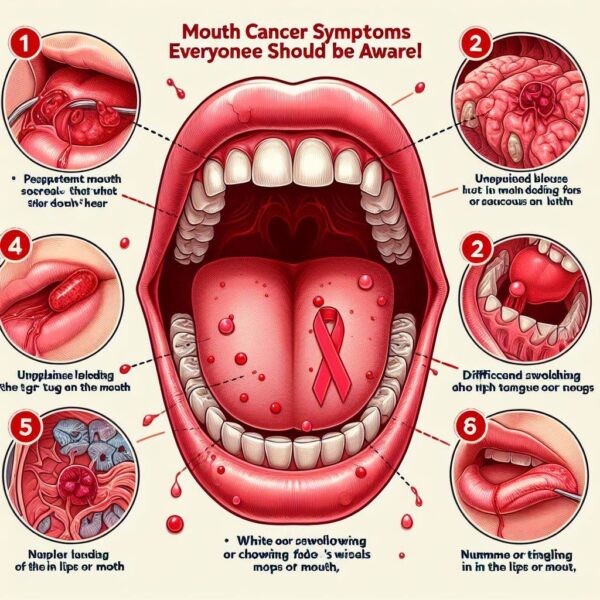
Mouth cancer, also referred to as oral cancer, is a serious and potentially life-threatening condition that affects various parts of the oral cavity, including the lips, tongue, gums, inner cheeks, palate, and throat. Recognizing the symptoms of mouth cancer is crucial for early detection and prompt intervention, as this increases the likelihood of successful treatment outcomes.
However, many individuals may not be aware of the signs and symptoms of mouth cancer, leading to delayed diagnosis and progression of the disease. In this article, we highlight six key symptoms of mouth cancer that everyone should know.
By understanding these symptoms and being vigilant in monitoring oral health, individuals can take proactive steps towards early detection and timely treatment of mouth cancer, potentially improving their prognosis and quality of life.
6 Mouth Cancer Symptoms:
1. Persistent Mouth Sores:
Mouth cancer may present as persistent ulcers or sores in the oral cavity that do not heal within two weeks and may bleed easily or cause discomfort.
2. White or Red Patches:
Mouth cancer can manifest as white or red patches (leukoplakia or erythroplakia) on the tongue, gums, inner cheeks, or other oral tissues, indicating abnormal cell growth or precancerous changes.
3. Lumps or Masses:
Mouth cancer may present as palpable lumps, masses, or thickening in the oral cavity, which may be painless or tender to the touch and may increase in size over time.
4. Difficulty Swallowing:
Mouth cancer affecting the throat or esophagus may cause difficulty or pain when swallowing (dysphagia) due to obstruction or inflammation of the affected tissues.
5. Persistent Sore Throat:
Mouth cancer in the throat or oropharynx may cause a persistent sore throat that does not improve with conventional treatments and may be accompanied by other symptoms such as hoarseness or difficulty speaking.
6. Changes in Voice:
Mouth cancer affecting the vocal cords or larynx may cause changes in voice quality, such as hoarseness, roughness, or a deepening of the voice, which may persist despite vocal rest or hydration.
Treatment Of Oral Cancer
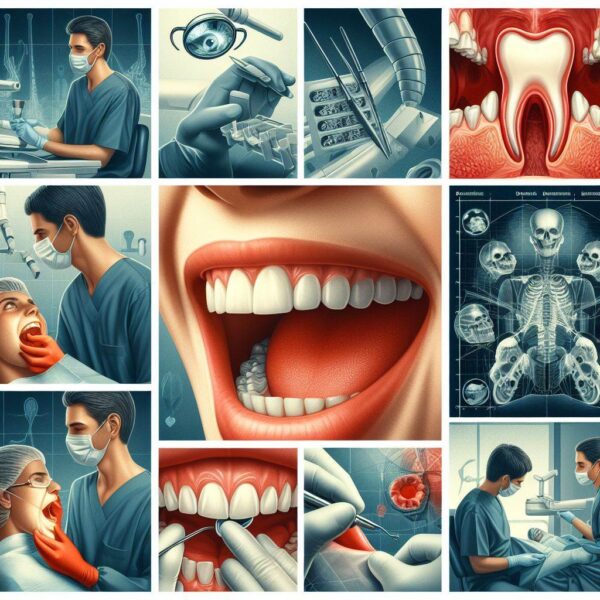
Oral cancer is a significant health concern that requires prompt and effective treatment to improve patient outcomes and quality of life. Treatment options for oral cancer vary depending on factors such as the stage of the disease, the location of the tumor, and the individual’s overall health.
From surgery and radiation therapy to chemotherapy and targeted therapy, various modalities may be used either alone or in combination to treat oral cancer. However, the goal of treatment remains consistent: to remove or destroy cancerous cells while preserving oral function and minimizing side effects.
In this article, we explore the diverse treatment approaches for oral cancer, highlighting their mechanisms of action, indications, and potential outcomes. By understanding the options available for treating oral cancer, individuals and their healthcare providers can make informed decisions tailored to their specific needs, ultimately improving their prognosis and enhancing their quality of life.
Treatments:
• Surgery:
Surgery is often the primary treatment for oral cancer and involves the surgical removal of the tumor and surrounding tissues. Depending on the extent of the disease, surgery may be performed to remove the tumor only (excisional biopsy), or it may involve more extensive procedures such as wide local excision, neck dissection, or reconstructive surgery.
• Radiation Therapy:
Radiation therapy uses high-energy beams to destroy cancer cells and shrink tumors. It may be used as the primary treatment for early-stage oral cancer or in combination with surgery and/or chemotherapy for advanced disease. External beam radiation therapy and brachytherapy (internal radiation therapy) are common techniques used in the treatment of oral cancer.
• Chemotherapy:
Chemotherapy involves the use of powerful medications to kill cancer cells or prevent them from growing and dividing. It may be administered alone or in combination with surgery and/or radiation therapy, depending on the stage and type of oral cancer.
Chemotherapy drugs may be given orally or intravenously and may be used before surgery (neoadjuvant chemotherapy), after surgery (adjuvant chemotherapy), or as palliative treatment for advanced disease.
• Targeted Therapy:
Targeted therapy targets specific molecules or pathways involved in the growth and spread of cancer cells, allowing for more precise and effective treatment. Drugs such as cetuximab and tyrosine kinase inhibitors (e.g., erlotinib) may be used in the treatment of advanced or recurrent oral cancer, particularly in cases where standard treatments have been ineffective.
• Immunotherapy:
Immunotherapy harnesses the body’s immune system to fight cancer by stimulating the immune response or blocking inhibitory pathways that allow cancer cells to evade detection. Drugs such as pembrolizumab and nivolumab have shown promise in the treatment of certain types of oral cancer, particularly in cases where other treatments have failed.
• Targeted Therapy:
Targeted therapy targets specific molecules or pathways involved in the growth and spread of cancer cells, allowing for more precise and effective treatment. Drugs such as cetuximab and tyrosine kinase inhibitors (e.g., erlotinib) may be used in the treatment of advanced or recurrent oral cancer, particularly in cases where standard treatments have been ineffective.
• Supportive Care:
Supportive care plays a crucial role in the comprehensive management of oral cancer and aims to alleviate symptoms, manage the side effects of treatment, and improve the patient’s quality of life. This may include nutritional support, pain management, psychosocial support, and rehabilitation services such as speech therapy and physical therapy.
• Clinical Trials:
Participation in clinical trials may offer eligible patients access to cutting-edge treatments and therapies for oral cancer that are not yet widely available. Clinical trials evaluate the safety and effectiveness of new treatments or treatment combinations and may provide hope for patients with advanced or refractory disease.
• Palliative Care:
Palliative care focuses on relieving symptoms and improving the quality of life for patients with advanced or incurable oral cancer. It addresses physical, emotional, and spiritual needs and may be provided alongside curative treatments or as the primary focus of care for patients nearing the end of life.
• Follow-up Care:
Regular follow-up care is essential for monitoring the patient’s response to treatment, detecting any signs of recurrence or metastasis, and addressing any long-term effects of treatment. Follow-up appointments may include physical examinations, imaging tests, blood tests, and discussions about supportive care and survivorship.
Rehabilitation After Treatment Of Oral Cancer

Rehabilitation after treatment for oral cancer is a crucial aspect of the recovery process, focusing on restoring oral function, managing treatment-related side effects, and improving the overall quality of life for survivors.
Treatment for oral cancer, which may include surgery, radiation therapy, chemotherapy, or a combination of these modalities, can often result in significant physical, emotional, and functional challenges.
Rehabilitation aims to address these challenges through a comprehensive approach that encompasses various interventions, including physical therapy, speech therapy, nutritional support, and psychosocial counseling.
By providing tailored rehabilitation services, healthcare providers can help survivors regain optimal oral function, cope with treatment-related sequelae, and reintegrate into daily life with confidence and independence. In this article, we explore the importance of rehabilitation after treatment for oral cancer and outline the key components of a rehabilitation program for oral cancer survivors.
Rehabilitation After Treatment:
1. Physical Therapy:
Physical therapy plays a vital role in restoring mobility, strength, and function in oral cancer survivors, particularly those who have undergone surgery or radiation therapy affecting the head and neck region. Physical therapists may prescribe exercises to improve range of motion, reduce pain and stiffness, and enhance muscle strength in the neck, jaw, and shoulders.
2. Speech Therapy:
Speech therapy is essential for addressing speech and swallowing difficulties that may arise following treatment for oral cancer. Speech therapists work with survivors to improve articulation, voice quality, and swallowing function through exercises, techniques, and strategies tailored to individual needs.
3. Swallowing Rehabilitation:
Swallowing rehabilitation focuses on improving swallowing function (dysphagia) and reducing the risk of aspiration (food or liquid entering the airway) in oral cancer survivors. This may involve exercises to strengthen swallowing muscles, dietary modifications, and strategies to improve coordination and safety during swallowing.
4. Dental Rehabilitation:
Dental rehabilitation may be necessary for oral cancer survivors who have undergone extensive surgical procedures or radiation therapy affecting the teeth and oral tissues. Dental prostheses, such as dental implants, bridges, or dentures, can restore missing teeth, improve chewing function, and enhance facial aesthetics.
5. Nutritional Support:
Nutritional support is essential for maintaining adequate nutrition and hydration during and after treatment for oral cancer. Dietitians or nutritionists may provide personalized dietary recommendations, nutritional counseling, and supplementation to address issues such as dysphagia, taste changes, and weight loss.
6. Pain Management:
Pain management is a key component of rehabilitation for oral cancer survivors, particularly those experiencing chronic pain or discomfort related to surgery, radiation therapy, or other treatment modalities. Pain management strategies may include medication management, physical modalities (e.g., heat therapy, massage), and complementary therapies (e.g., acupuncture, relaxation techniques).
7. Psychosocial Counseling:
Psychosocial counseling and support services are essential for addressing the emotional and psychological impact of oral cancer diagnosis and treatment on survivors and their families. Counseling may help individuals cope with stress, anxiety, depression, body image issues, and concerns about recurrence or survivorship.
8. Supportive Care:
Supportive care services, including palliative care and hospice care, may be offered to oral cancer survivors with advanced or incurable diseases to manage symptoms, improve quality of life, and provide compassionate end-of-life care.
9. Reintegration into Daily Life:
Rehabilitation programs aim to support oral cancer survivors in reintegrating into daily life, including returning to work, resuming social activities, and participating in recreational pursuits. Occupational therapy may be provided to address functional impairments and facilitate a smooth transition to post-treatment life.
10. Long-Term Follow-Up:
Long-term follow-up care is essential for monitoring the health and well-being of oral cancer survivors, detecting any signs of recurrence or late effects of treatment, and providing ongoing support and guidance as needed. Survivorship care plans may outline recommended follow-up appointments, surveillance tests, and lifestyle recommendations for optimal health and wellness.
What Does Stage 1 Mouth Cancer Look Like?
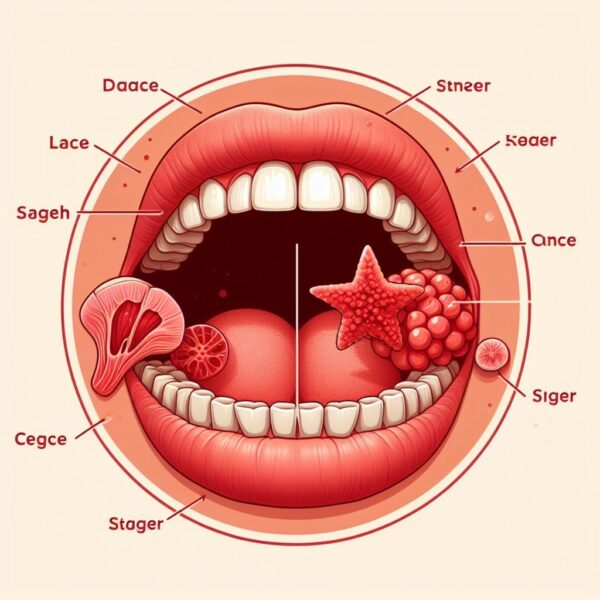
Stage 1 mouth cancer represents an early and localized form of the disease, where cancerous cells are confined to the site of origin and have not spread to nearby tissues or lymph nodes. Recognizing the visual characteristics of stage 1 mouth cancer is crucial for early detection and prompt intervention, as early-stage lesions are more likely to respond favorably to treatment.
However, identifying stage 1 mouth cancer can be challenging, as the symptoms may be subtle and easily overlooked. In this article, we explore the visual appearance of stage 1 mouth cancer, including its typical features, common locations within the oral cavity, and potential signs that may indicate the presence of early-stage disease.
By understanding what stage 1 mouth cancer looks like, individuals can be vigilant in monitoring their oral health and seek medical attention if they notice any concerning changes, potentially improving their prognosis and treatment outcomes.
Understanding Stage 1 Mouth Cancer Looks Like:
1. Small Ulcers or Sores:
Stage 1 mouth cancer may present as small ulcers or sores in the oral cavity, which may appear as red or white patches or a combination of both.
2. Persistent Lesions:
Lesions associated with stage 1 mouth cancer are typically persistent, meaning they do not heal within two weeks despite conservative measures such as topical treatments or mouth rinses.
3. Raised or Irregular Borders:
The borders of stage 1 mouth cancer lesions may be raised or irregular, with a defined edge that distinguishes them from surrounding healthy tissue.
4. Non-Healing Wounds:
Stage 1 mouth cancer lesions may resemble non-healing wounds or areas of chronic irritation, which may bleed easily or cause discomfort, particularly during eating or brushing teeth.
5. Localized Tenderness:
Individuals with stage 1 mouth cancer may experience localized tenderness or discomfort at the site of the lesion, which may be exacerbated by touch or pressure.
6. Changes in Texture:
Changes in the texture of oral tissues, such as roughness, induration (hardening), or thickening, may be observed in areas affected by stage 1 mouth cancer.
7. Single Site Involvement:
Stage 1 mouth cancer typically affects a single site within the oral cavity, such as the tongue, gums, inner cheeks, palate, or floor of the mouth, without evidence of spread to nearby tissues or lymph nodes.
8. No Visible Growth or Mass:
Unlike more advanced stages of mouth cancer, stage 1 lesions may not present as visible growths or masses, making them more challenging to detect without close examination.
9. Absence of Symptoms:
In some cases, individuals with stage 1 mouth cancer may not experience any noticeable symptoms, particularly if the lesion is small or located in a less visible area of the oral cavity.
How Does Mouth Cancer Start?
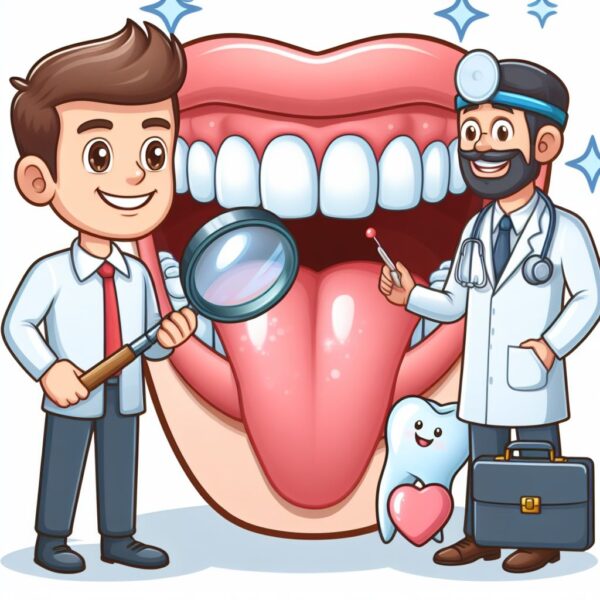
Understanding how mouth cancer is initiated is essential for early detection and prevention efforts. Mouth cancer, also known as oral cancer, develops when abnormal cells in the oral cavity or oropharynx grow uncontrollably, forming malignant tumors.
While the exact cause of mouth cancer is not always clear, various risk factors, including tobacco use, excessive alcohol consumption, human papillomavirus (HPV) infection, and poor oral hygiene, can contribute to its development.
Recognizing the early signs and risk factors of mouth cancer is crucial for prompt diagnosis and intervention, as early-stage lesions are more likely to respond favorably to treatment.
In this article, we explore the process of how mouth cancer starts, examining the underlying factors and mechanisms involved in the initiation and progression of this disease. By understanding how mouth cancer begins, individuals can take proactive steps to reduce their risk and promote early detection, potentially improving their prognosis and treatment outcomes.
Start Of Mouth Cancer:
• Genetic Mutations:
Mouth cancer often begins with genetic mutations or alterations in the DNA of cells within the oral cavity or oropharynx. These mutations can occur spontaneously or be triggered by various factors, such as exposure to carcinogens or viral infections.
• Tobacco Use:
Tobacco use, including smoking and chewing tobacco, is one of the most significant risk factors for mouth cancer initiation. The carcinogens present in tobacco products can damage the DNA of oral cells, leading to the development of cancerous lesions over time.
• Alcohol Consumption:
Excessive alcohol consumption is another major risk factor for mouth cancer initiation. Alcohol can irritate the oral tissues, impair the body’s ability to repair DNA damage and weaken the immune system, making individuals more susceptible to cancer development.
• Human Papillomavirus (HPV) Infection:
Infection with high-risk strains of HPV, particularly HPV-16 and HPV-18, is associated with an increased risk of developing mouth cancer, particularly in the oropharynx. HPV infection can lead to the dysregulation of cell growth and proliferation, contributing to cancer initiation and progression.
• Chronic Oral Inflammation:
Chronic inflammation of the oral cavity, such as that caused by poor oral hygiene, untreated dental infections, or ill-fitting dentures, can promote the development of mouth cancer by creating a pro-inflammatory environment that favors cancerous cell growth.
• Dietary Factors:
Dietary factors, such as a diet high in processed foods, red meat, and low in fruits and vegetables, may increase the risk of mouth cancer initiation. Poor nutrition can compromise the body’s immune function and antioxidant defenses, making individuals more susceptible to cancer development.
• Environmental Carcinogens:
Exposure to environmental carcinogens, such as asbestos, formaldehyde, and certain chemicals used in manufacturing and construction, can contribute to mouth cancer initiation by damaging the DNA of oral cells and promoting malignant transformation.
• Oral Hygiene Practices:
Poor oral hygiene practices, including infrequent brushing and flossing, inadequate dental care, and failure to attend regular dental check-ups, can increase the risk of mouth cancer initiation by promoting the accumulation of plaque, bacteria, and toxins in the oral cavity.
• Age and Gender:
Advancing age and male gender are additional risk factors for mouth cancer initiation, with the majority of cases diagnosed in individuals over the age of 50 and men being at higher risk than women.
• Immunosuppression:
Immunocompromised individuals, such as those with HIV/AIDS or undergoing organ transplantation, are at increased risk of developing mouth cancer due to impaired immune function and reduced ability to eliminate cancerous cells.
Is Oral Cancer Curable?
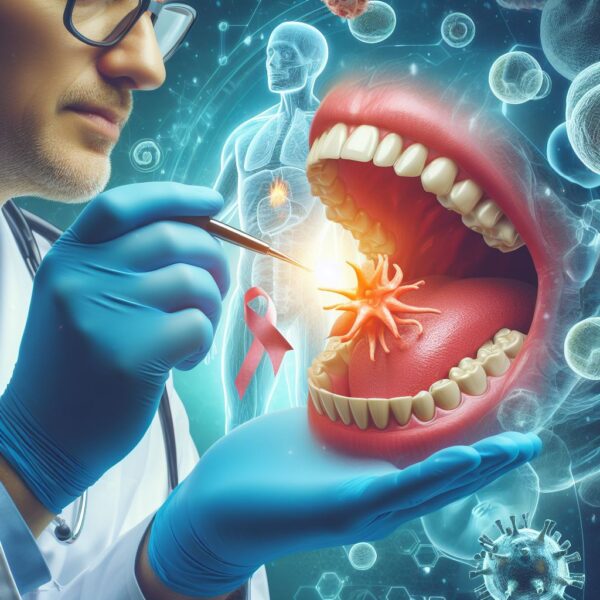
The diagnosis of oral cancer often raises questions about the potential for a cure and the outlook for individuals facing this diagnosis. Oral cancer, a type of cancer that affects the mouth and oral cavity, presents unique challenges in terms of treatment and prognosis.
Understanding the nuances of oral cancer’s curability is essential for patients, their families, and healthcare professionals alike. In this article, we delve into the question: Is oral cancer curable? By exploring the complexities of oral cancer treatment and the factors that influence outcomes, we aim to provide clarity and insight into this critical aspect of cancer care.
Oral cancer is potentially curable, especially when diagnosed and treated early. The curability of oral cancer depends on factors such as the stage of the disease at diagnosis, the location and size of the tumor, and the individual’s overall health.
Treatment options for oral cancer may include surgery, radiation therapy, chemotherapy, targeted therapy, and immunotherapy. With advancements in treatment modalities and early detection efforts, many individuals with oral cancer achieve remission and long-term survival.
However, the prognosis may vary depending on the specific characteristics of the cancer and the individual’s response to treatment. Regular monitoring and follow-up care are essential for managing oral cancer and improving outcomes.
Is Oral Cancer Painful?
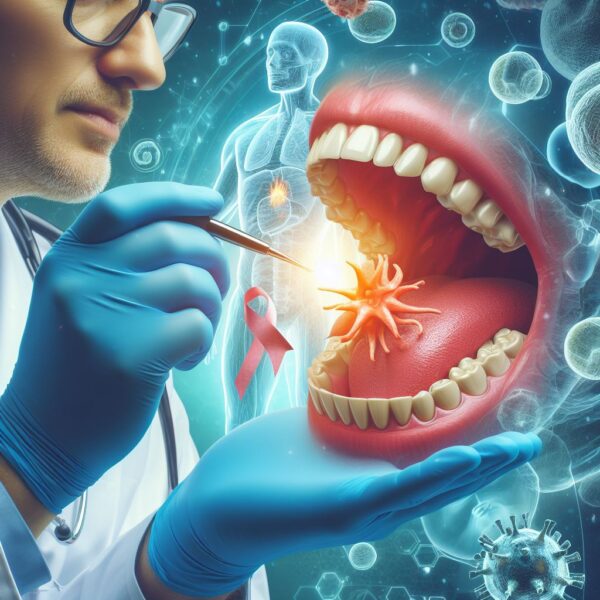
The prospect of oral cancer can evoke fear and concern, prompting questions about the symptoms and impact of the disease on daily life. Among these concerns is the question of whether oral cancer is associated with pain.
Oral cancer, which affects various structures in the mouth, including the lips, tongue, gums, cheeks, and throat, can present a range of symptoms, from subtle changes to more noticeable signs of disease.
Understanding the role of pain in oral cancer is essential for early detection, diagnosis, and management of the disease. In this article, we explore the relationship between oral cancer and pain, shedding light on common symptoms and potential sources of discomfort experienced by individuals affected by this condition.
Oral cancer can be associated with pain, although not all individuals experience pain as a symptom of the disease. The presence and severity of pain in oral cancer may vary depending on factors such as the location and size of the tumor, the extent of tissue involvement, and individual pain thresholds.
Common sources of pain in oral cancer may include ulceration or erosion of oral tissues, nerve compression or invasion by the tumor, inflammation, and secondary infections. However, some individuals with oral cancer may not experience pain initially, particularly in the early stages of the disease.
Regular dental check-ups, self-examinations of the oral cavity, and prompt evaluation of any concerning symptoms can help detect oral cancer early and facilitate timely intervention to manage pain and improve outcomes.
Conclusion:
Recognizing the symptoms of oral mouth cancer is paramount for early detection and effective treatment. From persistent mouth sores to changes in voice quality, being aware of these signs can prompt individuals to seek medical attention promptly, potentially improving their prognosis and treatment outcomes.
Regular dental check-ups, self-examinations, and awareness of risk factors can play a crucial role in identifying oral cancer at its earliest stages. By understanding the symptoms and seeking timely medical evaluation, individuals can take proactive steps toward protecting their oral health and well-being.
FAQs:
Q1: What are the common symptoms of oral mouth cancer?
A: Common symptoms of oral mouth cancer include persistent mouth sores, white or red patches in the mouth, difficulty swallowing, changes in voice quality, and unexplained lumps or thickening in the mouth or throat.
Q2: Do all mouth sores indicate oral cancer?
A: No, not all mouth sores indicate oral cancer. However, persistent mouth sores that do not heal within two weeks or show signs of improvement should be evaluated by a healthcare professional, as they may be a symptom of oral cancer or another underlying condition.
Q3: Can changes in voice quality be a sign of oral cancer?
A: Yes, changes in voice quality, such as hoarseness, roughness, or a persistent sore throat, can be symptoms of oral cancer, particularly when accompanied by other oral or throat-related symptoms.
Q4: What should I do if I notice any concerning symptoms of oral mouth can
cer?
A: If you notice any concerning symptoms of oral mouth cancer, such as persistent mouth sores, patches, difficulty swallowing, or changes in voice quality, it is essential to seek medical evaluation promptly. Your healthcare provider can perform a thorough examination and recommend further diagnostic tests if needed.
Q5: Are there any risk factors that increase the likelihood of developing oral mouth cancer?
A: Yes, several risk factors are associated with an increased likelihood of developing oral mouth cancer, including tobacco use (smoking or chewing), excessive alcohol consumption, human papillomavirus (HPV) infection, poor oral hygiene, and a history of previous oral cancer or precancerous lesions.
Individuals with one or more of these risk factors should be particularly vigilant in monitoring their oral health and seeking regular dental check-ups.
